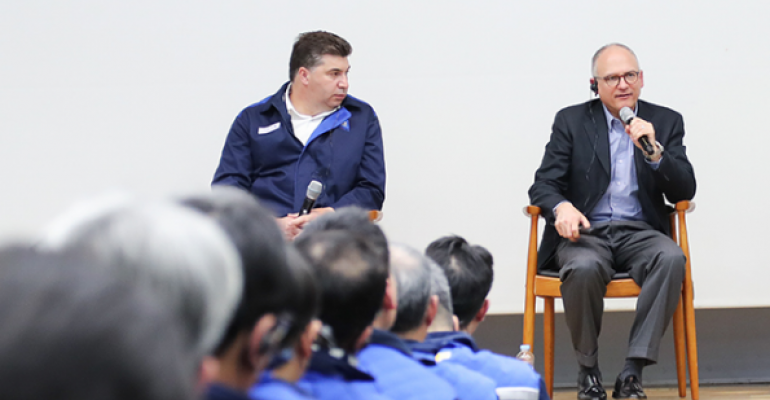GM Korea edges closer to the brink of bankruptcy as it faces a self-imposed Friday deadline for persuading the union representing thousands of its workers to accept a freeze on wages and bonuses in this year’s collective-bargaining agreement.
If the GM Korea branch of the Korea Metal Workers Union does not accept the proposed freeze by then, the automaker will miss an April 20 deadline for submitting a restructuring and turnaround plan and will have no choice but to file for bankruptcy, GM International President Barry Engle told union leaders at a March 26 meeting.
GM Korea is asking the KMWU to “share the pain” necessary in restructuring the company to make it profitable with a sustainable future.
The KMWU did not publicly respond to Engle following that meeting, but it released a document claiming the deadline for accepting a wage and bonus freeze was April 20, not March 31. GM Korea says the March 31 deadline is firm, although Engle said the company would accept a tentative agreement in lieu of a fully executed agreement so it could factor the effects of the freeze and liability for worker-related costs into its turnaround plan.
The turnaround proposal is to go before the government-owned Korea Development Bank and parent company General Motors, which have indicated they will provide short-term financial assistance contingent on a wage and bonus freeze.
A source familiar with the contract negotiations tells Wards Intelligence that Engle told KMWU leaders GM Korea urgently needs $600 million in new operating funds by the end of April.
Much of the money is needed to pay employee performance bonuses under the 2017 wage agreement signed in January, as well as compensation for workers who have filed for buyout packages.
GM Korea has received 2,600 buyout requests from employees, including 1,100 from the Gunsan plant, which will be shuttered by the end of May. The voluntary separation packages provide workers with up to three years of pay and other financial support, including school tuition for workers’ children.
Another 680 Gunsan workers who are slated to lose their jobs have not applied for the voluntary separation package. No decision has been made on their compensation.
The KMWU said March 15 that it would accept a wage and bonus freeze in a new wage agreement, but under conditions management rejected, including canceling the plan to close the Gunsan plant, raising the worker retirement age from 60 to 65, agreeing to not eliminate any jobs for the next 10 years, and distributing 405 billion won ($378 million) in company stock so as to provide every employee with shares valued at 30 million won ($28,000).
GM Korea did agree to make minor adjustments, such as continuing to provide workers with free lunches and commuter-bus transportation.
GM Korea currently owes GM affiliates $2.7 billion in outstanding debt. The debt would be eliminated in a planned equity swap involving the issue of new shares, once all stakeholders have seen and supported the turnaround plan.
GM owns 77% of the stock of GM Korea, the Korea Development Bank owns 17% and SAIC, GM Korea’s joint-venture partner in China, owns 6%.
The automaker reported a 2017 operating loss of 800 billion won ($738 million). Domestic sales, as well as its important export business, are slumping badly and both GM Korea and parent GM say manufacturing costs are too high.





